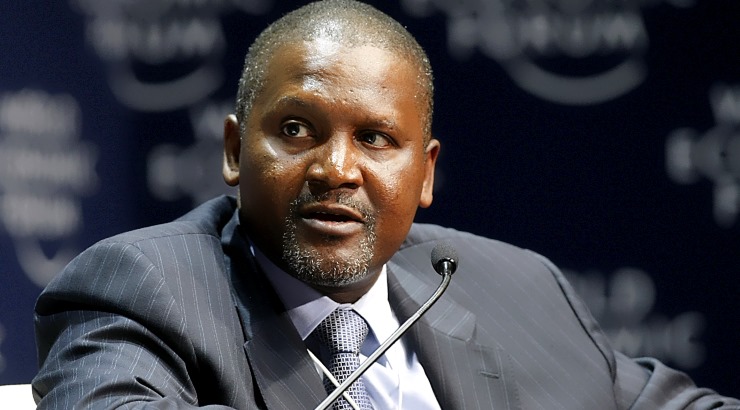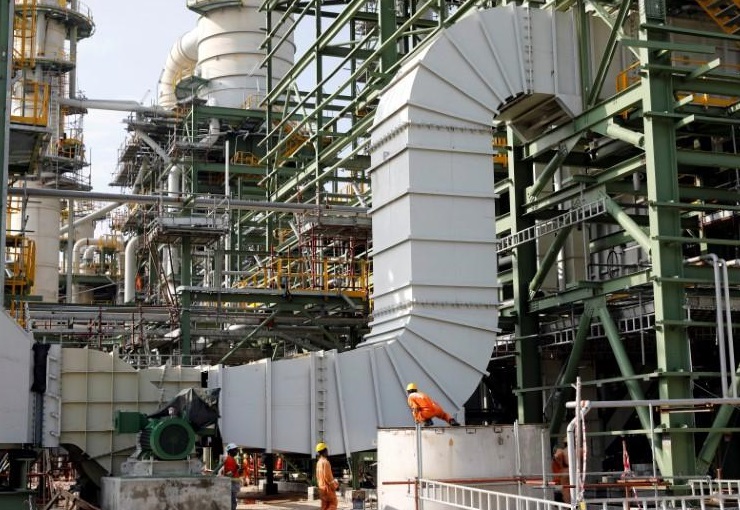Infrastructure
Incredible Details of Aliko Dangote’s $20bn Refinery
The facility sits on a 2,600-hectare swamp in the Lekki area of Lagos.

Africa’s richest man Aliko Dangote has launched a $20 billion oil refinery in Lagos, Nigeria — gifting the country one of the largest crude oil refineries in the world.
The Dangote Refinery and Petrochemical Complex, which is located in the Lekki Free Trade Zone in Lagos will process 650,000 barrels of oil a day, which is nearly 1% of global production. This makes it the biggest refinery in Africa.
When the factory begins operations, it will produce up to 53 million litres of petrol per day, as well as 4 million litres of diesel and 2 million litres of jet fuel daily.
During the launch of the refinery on May 22, Mr. Dangote described the plant as “the world’s largest single train refinery”.
This means the facility has one integrated distillery system that can produce a variety of products instead of having different units for each type of product.
“We have built a refinery with a capacity to process 650,000 barrels per day in a single train — which is the largest in the world … We decided on a plant designed with state-of-the-art technology and a scale in a capacity that will be a game-changer in Africa and the global market,” Mr. Dangote said.
The refinery took nearly seven years to build on a 2,600-hectare swampland, requiring the sinking of 120,000 piles, each about 25 metres in length.
It has a 1,100km gas pipeline to handle three billion standard cubic feet of gas per day and a power plant to meet its total power requirement.
World’s biggest plant
The Dangote Refinery also has a gas processor, the world’s biggest plant for ammonia and urea, used in making plastics and fertiliser, and a fertiliser plant that will use the refinery by-products as raw materials.

Other amenities include a pipeline system, access roads, tank storage facilities, and services for crude and product handling. Additionally, a marine terminal consisting of a breakwater, jetty, and harbour has been built.
The refinery will produce Euro-V quality gasoline and diesel, as well as jet fuel and polypropylene.
Since no port or road in Nigeria was big enough to handle delivery of the equipment, which included a distillation tower with the height of a 30-storey building, Dangote had to build both facilities, including a jetty for which he dredged the seabed for 65 cubic metres of sand.
RELATED: Top 10 Construction Projects in Africa
Dangote also built his industrial gas plant to supply welding gas, and a power plant capable of generating the 480MW required to power his factory.
Africa’s moon landing
The Dangote Refinery is so huge that a 2018 edition of the Financial Times described its layout as “so big, so audacious and so potentially transformative that it is like Africa’s moon landing and its Panama Canal — a Pyramids of Giza for the industrial age.”
The magazine said the completion of the refinery would elevate Mr Dangote to a status comparable to that of John D. Rockefeller, Andrew Carnegie, and Andrew Mellon combined.
“When we finish this project, for the first time in history, Nigeria will be the largest exporter of petroleum products in Africa,” Dangote said in an earlier interview with the Financial Times.
Project team
Engineers India was the project’s engineering, procurement, and construction (EPC) contractor, while Honeywell UOP was the supplier of catalyst regeneration and dryer regeneration control systems, column trays, heat exchanger tubes, a modular CCR unit, and catalyst coolers among other equipment.
C&I Leasing provided transportation and installation services for mooring systems and subsea pipelines of the refinery, while Hang Xiao Steel Structure Company provided steel structure for the refinery.
Jan De Nul Group was engaged in carrying out land reclamation works.
MAN Diesel & Turbo supplied two compressor trains, while Air Liquide Engineering & Construction delivered the SMR units.
Other firms involved in the project include WABAG (raw water treatment plant), Schneider Electric (process automation systems), and SOFEC (Catenary Anchor Leg Mooring buoys).














